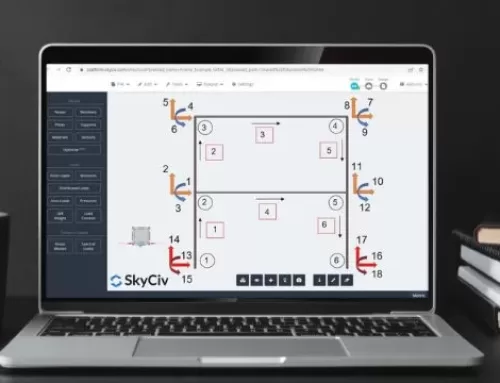In Structural Analysis, the term degrees of freedom is extremely important yet often misunderstood. Degrees of freedom refers to the 6 possible movements that can occur at a point and whether or not these movements are free to move or are restrained. Although that might seem like a lot of jargon, it will become better understood throughout this tutorial and instructional video below.
Firstly what are the 6 degrees of freedom? Picture an airplane suspended in space. The airplane is free to move forward or back (along its X axis), left to right (along its Z axis) or up and down (along its Y axis). These are known as translations and make up the first three degrees of freedom. The airplane is also free to rotate side to side (rolling - rotating about its own X axis), pitch down or up (rotate about its own Z axis) or yaw left or right (rotating about its own Y axis). These are the 4th 5th and 6th degrees known as rotational degrees of freedom. So in short:
- X translation
- Y translation
- Z translation
- X rotation
- Y rotation
- Z rotation
What the letters represent?
- 'F' - Fixed - There is a fixed restraint for this degree of freedom. Any force acting in this direction is absorbed by the support at a node or by the connected member in a connectivity.
- 'R' - Released - There is a no restraint for this degree of freedom. The node is free to move in this direction and any force acting in this direction is does not pass on to the connected element or support.
- 'S' - Spring - There are restraints but their level of restraint is based on the spring's coefficient based on Hooke's Law.
Restraint Codes for Supports
The type of support used in a structural analysis model is often determined by the 6 degrees of freedom. An example is representing the 6 degrees of freedom by a 6 character code comprised of a combination of Fs and Rs - where F = Fixed and R = Released. For instance, a totally fixed support is denoted by the code "FFFFFF" as it is fixed in all 6 degrees of freedom. A pin support is often only released in the Z rotation and is therefore denoted by "FFFFFR". Another example is a roller support. In this example, it cannot support any of the force in the x translation or in any of the rotations. It is therefore given the restraint code ‘RFFRRR’.
Another way to think of it, is that the support will contain a reaction for any degree of freedom that is fixed. For instance, a pinned support is fixed in the X and Y translation - it is therefore expected that there will be a reaction in the x and y direction.
CEO and Co-Founder of SkyCiv
BEng (Civil), BCom







